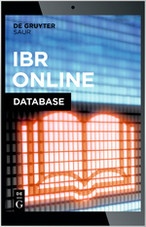- 27 December 2016
Article/Publication Details
Views: 3689
DREAM EXPLORATIONS
| Title in the language of publication: | TRAUM-ERKUNDUNGEN |
| Author: | Konstantin Gemenetzis |
| Issue: |
HORIZON. Studies in Phenomenology. Vol. 5, №2 (2016), 142–174 |
| Language: | German |
| Document type: | Research Article |
| DOI : 10.18199/2226-5260-2016-5-2-142–174 | PDF (Downloads: 3273) |
Abstract
This paper is an attempt to explore the dreams along various ways. A critical crossroad is the point
where the dream manifests itself as a figure of the Other. Dream interpretations (Sigmund Freud,
Medard Boss), violate the alterity of the dreamer – they relate the dream to the constitution of the
awake. Dream interpretations are answers to the “Whys” and the “Hows” of a dream. They are
explanations that just soothe the uneasiness caused by the uncanny dream world. Few quotes from
Elias Canetti’s notes emphasize on the singularity of a dream and its mysterious, i.e. inexplicable
nature. A brief critical review of Medard Boss’s conception of dreams allows to understand a dream
as magnifying mirror of the existential features decisive for the shortcomings one faces in his
everyday life. In psychoanalytic practice (and not only here) we cannot grasp a dream by going
straight to the point. “Free associations” and “free floating attention” guide us to other, indirect and
unforseen ways of approach. Remembering and forgetting dreams is an experience different from
remembering and forgetting things. The question “What is a dream?” is a trap because it demands
an answer like “The dream is …”. A dream is not something, it is not a “that”. We attempt to speak
about dreams following a phrase in Odyssey – “sie gingen vorbei an den Toren der Sonne, an der
Gemeinde Träume, und kamen dann schnell an ihr Ziel, zur Asphodeloswiese”. Further goes a brief
discussion of Beckett’s play for television (“Nacht und Träume”). And finally a revision of the famous
Dschuang Dsi’s dream (“Butterfly Dream”) on the basis of a painting by Katsushika Hokusai “The
chinese philosopher Sōshi looking at butterflies”.
Key words
Dreams, Sigmund Freud, Elias Canetti, Medard Boss, butterfly dream, Samuel Beckett, Hokusai.
References
- Angelus Silesius, (1949). Cherubinischer Wandersmann. In H.L. Held (Ed.), Sämtliche poetische Werke. München: Hilfsstelle.
- Aristotelis, (1832). Opera Omnia. Volumes 6-7. Leipzig: Tauchnitz.
- Beckett, S. (1986). All that Fall. The Complete Dramatic Works. London: Faber and Faber.
- Boss, M. (1976). Indienfahrt eines Psychiaters. Bern: Huber.
- Byung-Chul, H. (2002). Philosophie des Zen-Buddhismus. Stuttgart: Reclam.
- Canetti, E. (1973). Die Provinz des Menschen. Aufzeichnungen 1942-1972. München: Hauser.
- Dschuang, D. (1969). Das wahre Buch vom südlichen Blütenland. Düsseldorf: Eugen Friedrichs.
- Freud, S. (1998a). Die Traumdeutung (GW II/ΙΙΙ). Frankfurt a. Main: Fischer.
- Freud, S. (1998b). Vorlesungen zur Einführung in die Psychoanalyse (GW XI). Frankfurt a. Main: Fischer.
- Freud, S. (1998c). Neue Folge der Vorlesungen zur Einführung in die Psychoanalyse (GW XV). Frankfurt a. Main: Fischer.
- Freud, S. (1982). Schriften zur Behandlungstechnik. Frankfurt a. Main: Fischer.
- Georgiades, T. (1985). Nennen und Erklingen: Die Zeit als Logos. Göttingen: Vandenhoeck und Ruprecht.
- Heidegger, M. (1976). Wegmarken (GA 9). Frankfurt a. Main: Vittorio Klostermann.
- Heidegger, M. (1983). Aus der Erfahrung des Denkens (GA 13). Frankfurt a. Main: Vittorio Klostermann.
- Heidegger, M. (1986). Seminare (GA 15). Frankfurt a. Main: Vittorio Klostermann.
- Seferis, G. (1974). Dokimes. Athena: Ikaros.
- Wittgenstein, L. (1994). Vermischte Bemerkungen. Frankfurt a. Main: Suhrkamp.

This work is licensed under a Creative Commons Attribution-NonCommercial 4.0 International License.

|
|
|
|
|

|
|
|
|
|

|
|
|
|
|
|
|
|
|
|
|
|
|
|
|
|
|
|
|
|
|
|

|
|
|
|
|
|
|
|
|
|
|
|
|
|
|
|
|
|
|
|
|
|
|
|
|
|
|
|

|

|
Social networks:





